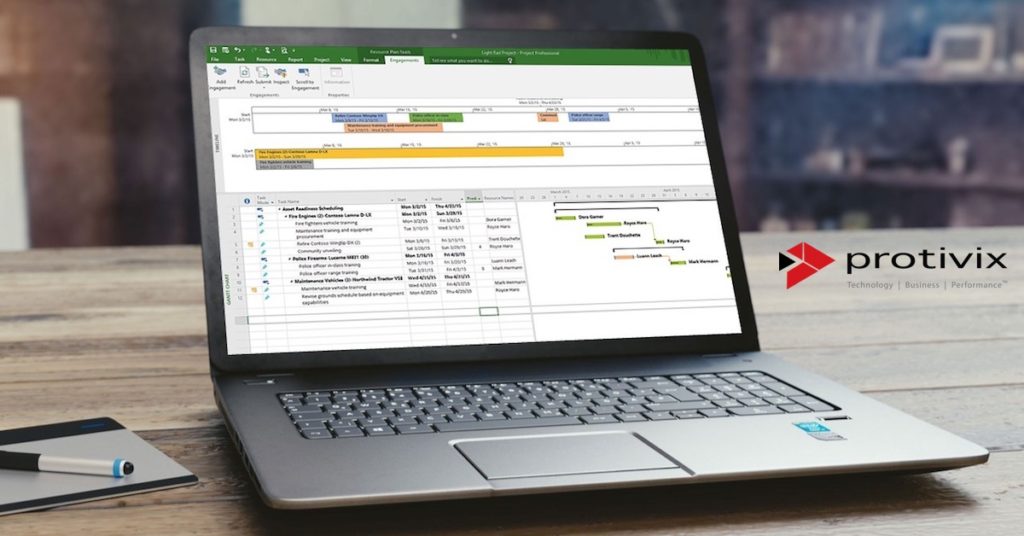How Forrester Conducted Research on Four Organizations in Order to Determine the Impact of Implementing Project Online as a Solution
Forrester Consulting was commissioned by Microsoft to conduct a Total Economic Impact (TEI) study and examine the potential return on investment (ROI) that enterprises might realize by deploying Microsoft Project Online. The purpose of this study was to provide its consumers with an architecture from which to evaluate the potential financial impact of Project Online on their organizations.
What is Microsoft Project Online?
Microsoft Project Online is a cloud-based software-as-a-service (SaaS) offering that helps organizations improve resource management, increase project management performance, and improve visibility into projects, programs, and portfolios. As a cloud-based solution, Project Online reduces infrastructure costs and removes the need for costly software upgrades. Project Online scales with business growth while meshing productively with Office 365 products and also integrating with SharePoint and Power BI.
The Situation Before Implementation of Project Online
Prior to Project Online, customers implemented an outdated onsite project management solution that was poorly utilized and implemented by project managers (PMs). In many instances, Microsoft Excel was the tool of choice for PMs to track project progress and performance. Use of Excel spreadsheets in this way impeded visibility into projects for leadership, finance, and project management offices (PMOs), hindering their ability to strategically manage project portfolios.
After Implementation of Project Online
Once Project Online was implemented, PMs were able to build more consistent project management practices that provided greater visibility into project management performance. This provided leadership with the ability to make better strategic decisions in the project portfolio. When speaking about the implementation of Microsoft Project Online, one enterprise PMO leader said: “The visibility to the projects was huge…especially when you can deploy it at an enterprise level and for the first time as an organization get visibility to your entire project portfolio, and then making the selection, prioritization, and sequencing decisions.”
Overall Benefits Findings after Analysis
For purposes of this study, Forrester conducted extensive interviews with four existing organizations using Project Online. Subsequent financial analysis of the implementation of the solution found that a composite organization based on these interviewed organizations experienced benefits of $2.7 million per year versus implementation costs of $1.7 million and annual costs of $174,890, adding up to a net present value (NPV) of $6,279,113. This translates to benefits of more than $5,500 per user per year, costs of less than $1,400 per user per year, and an NPV of more than $4,100 per user per year. With Project Online, visibility into project performance helped reduce budget overruns by 5%, leading to $2.6 million of savings over three years. Additional benefits included increased project management performance, reduced infrastructure costs, and better resource management.
The costs and benefits for a composite organization of 5,000 employees to implement Project Online (based on customer interviews) were as follows:
- Investment costs: $1,710,810.
- Annual costs: $174,890.
- Total cost savings and benefits: $8,359,959.
Below is a financial summary outlining the three-year risk-adjusted results following implementation of the Project Online solution:
- ROI: 301%
- NPV per user: $12,546
- Payback period: 6.7 months
- Total benefits: $8,359,959
(Source: Forrester Research, Inc.)
Benefits
The composite organization created from the 4 organizations which participated in the Forrester study experienced the following risk-adjusted present value benefits:
- Improved visibility into project performance reduced project budget overruns by 5%. Excluding labor costs, visibility into project performance allowed organizations to make timely decisions and address issues as they arose, preventing project delays and reducing budget overruns by $2,629,761 over three years.
- Increased project management performance and project throughput generated $1,864,209 in savings over three years. Project Online, by streamlining reporting and reducing the amount of administrative workload on project managers, allowed them to be more productive and increase their annual project throughput by 14%.
- Improved resource management led to $3,103,119 of savings over three years. Project Online provided the ability for resource pools to be more effectively managed while improving the alignment of skill sets.
- Migrating to a cloud-based SaaS PPM solution allowed organizations to save $162,000 annually. In addition to a reduction in annual maintenance and infrastructure cost avoidance, organizations were able to save an additional $360,000 in avoiding the upgrade of their on-premises project management software.
Costs
The composite organization experienced the following risk-adjusted present value costs:
- Software licensing fees of $167,271, or $124 per user per year: This was the blended annual software license cost for Microsoft Project Online per user per year based on 70% lite users, 20% advanced users, and 10% Project Pro users.
- Implementation costs of $1,263,554: This includes $500,000 of professional service fees for implementation and $100,000 of ongoing support costs from Microsoft. An additional six internal full-time equivalents (FTEs) were included to support the implementation of Project Online.
- Change management costs of $450,000: In order to ensure high adoption rates and maximize the benefits realized by Project Online, change management support would be required for nine months after deployment.
- Internal training costs of $205,920: A total of 4,000 hours of training was required for the combination of project managers and lite users.
The evident results of this Forrester study spanning four separate organizations is that implementation of the SaaS solution Microsoft Office PPM can be a revolutionary game changer for organizations. With projected returns on investment over 300% after implementation and a substantial increase of productivity noted, it would greatly benefit any organization to investigate whether Microsoft Project Online is the right solution for their project management needs.
Set up a meeting with a Protivix team member to learn more.

